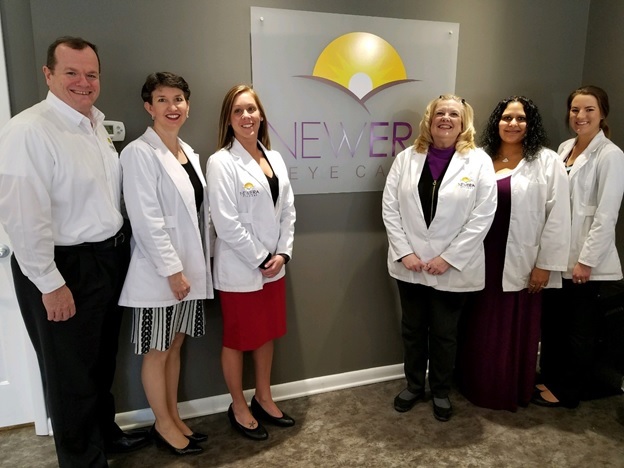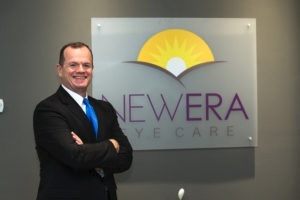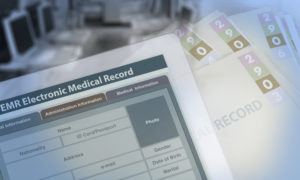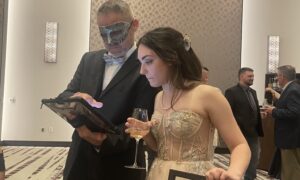By Brian O’Donnell, OD

August 15, 2018
You hired the right people to your staff, and have thoroughly trained them–but have you incentivized them to do their best? My practice uses an employee incentive program that has resulted in 10 percent growth in revenue generated. We have done this with 30 percent less staff than prior years.
Most importantly, our entire office is having fun in working to achieve our goals. Here is how I motivate my employees to partner with me build a profitable practice.
Maintain a Budget for Staff Incentives
Our staff incentive program costs the practice $10,000+ yearly.
The amount of money we spend on staff bonuses varies greatly, with rewards including meals at nice restaurants and activities like spa days, in addition to bonuses to salary. Last year, after completing our summer incentive game, we offered both time off and a “spa day” for all of our employees to reward reaching our practice-wide revenue-generation goal.
In addition, employees who achieve their goals are publicly recognized, and congratulated in our staff meetings.
The return on investment for our staff incentive program has been phenomenal. We have had double-digit growth in the last few years, of 10 percent, and seem headed to repeating that this year. The wonderful part of this financial growth has been that our quality has improved, as we have attracted talented people to be part of our team.
Along with increased volume and production, our patient surveys have revealed a steady improvement in the level of service we deliver.
Turn High Performance Into a Game
Our incentive program, or what we like to call our Office Goals/Games Program, are conducted on both an individual and group level. At the end-of-year meeting we set the goal and bonus for the next year. In addition to all employees, as a team, getting rewarded for meeting that end-of-year goal, and smaller goals leading up to that big goal, each employee has a “game” to play based on their own performance.
The end-of-year meeting takes place in a celebratory fashion, creating an excitement for the next year’s game. We have weekly games that are carefully constructed to eventually lead us to the end-of-year goal. We also have seasonal games, such as the Summer Bonanza game that goes from Tuesday after Memorial Day to Friday prior to Labor Day Weekend, and tracks performance on metrics like optical sales and number of new patients brought into the practice.
We’ve turned attracting new patients into a game, with employees rewarded for the number of new patients we get. Our number of new patients has consistently grown over the last few years.
There are usually key metrics areas we emphasize, such as overall revenues and number of new patients, and assign a number and staff member to each of those statistics. For example, there is a incentive, or “game,” related to our exams statistic. One staff member is in charge of that area or statistic. They get a weekly bonus, seasonal bonus and yearly bonus based on growth in the number of exams we conduct. All staff participate in at least one game, which could be associated with other key indicators.

Dr. O’Donnell with five members of his six support staff team in March 2017. The incentive program Dr. O’Donnell uses, which includes both bonuses and gifts like special outings, gets staff excited about the growth and progress of the practice.
Whole Practice Should Monitor Goals Together
We have quarterly graphs posted on each key metric, and a very large red-line graph in prominent view, so every employee can see how we are progressing toward the overarching end-of-year goal. We teach a basic statistics course as part of our training program, so all of our employees know how to read these graphs to gauge their own, and the practice’s, performance.
For instance, our optician has an optical sales weekly game, and corresponding quarterly graphs, to chart her progress.
Emphasize that It’s Friendly Competition
We emphasize to staff that the purpose of the individual performance games are to boost our team effort–toward reaching our practice-wide end-of-year goal.
We show staff how their work intersects, and impacts, that of their co-workers. For instance, we point out that the optician cannot sell the products she needs to sell to meet her goals if we aren’t all working to bring as many patients as possible into the office.
Staff are also taught that it is the overall experience the patient has when they visit our office that determines whether they return, and refer others. We focus on the team-wide effort of making every patient happier when they leave the office than they were when they arrived.
 Brian O’Donnell, OD, owns New Era Eye Care in Shavertown, Penn. To contact: bod@neweraeye.com.
Brian O’Donnell, OD, owns New Era Eye Care in Shavertown, Penn. To contact: bod@neweraeye.com.




























